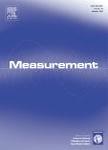版权所有:内蒙古大学图书馆 技术提供:维普资讯• 智图
内蒙古自治区呼和浩特市赛罕区大学西街235号 邮编: 010021

作者机构:Univ Autonoma Yucatan Fac Ingn Ave Ind Contaminantes Perifer Norte Merida Yucatan Mexico UJAT DAIA Carretera Cunduacan Jalpa Mendez Km 1 Cunduacan 86690 Tabasco Mexico Ctr Nacl Invest & Desarrollo Tecnol CENIDET TecNM Prol Ave Palmira S-N Col Palmira Cuernavaca 62490 Morelos Mexico
出 版 物:《MEASUREMENT》 (测量)
年 卷 期:2019年第138卷
页 面:106-117页
核心收录:
学科分类:08[工学] 080401[工学-精密仪器及机械] 0804[工学-仪器科学与技术] 081102[工学-检测技术与自动化装置] 0811[工学-控制科学与工程]
基 金:The authors acknowledge Miguel Beltrán for his support to perform the experimental tests. We also thank Carlos Torres for his help to manufacture the secondary steel roof. Finally we appreciate the support of Rasikh Tariq for the language revision
主 题:Heat gains Building thermal measurement Thermal comfort Machine learning Evolutionary programming Sensitivity analysis
摘 要:In this work, a multi-gene genetic programming (MGGP) approach was implemented to predict the heat gain per square meter for flat naturally ventilated roof using experimental data set. Experiments were conducted using a test cell with an adjustable ventilated roof, designed and instrumented to measure the incoming heat flux under outdoor environmental conditions. An MGGP predictive model was trained and tested considering as input data: ambient air temperature, solar irradiation, wind speed, relative humidity, and different ventilated flat roof channel widths. The developed model was statistically compared with others multivariate analysis methods, achieving good statistical performance, high correlation fitness, and the best generalized performance capacity (RMSE = 3.74, R-2 = 94.52% for training data and RMSE = 3.72, R-2 = 94.30% for testing data). In addition, a sensitivity analysis was conducted to identify the relative importance of the input parameters in the predictive model. According to the results, the proposed methodology based on evolutionary programming is useful to model the complex nonlinear relationship between the ventilated roof heat gains and outdoor environment. Finally, the methodology based on MGGP can be applied to identify the adequate ventilated channel widths that ensure thermal comfort and energy saving. (C) 2019 Elsevier Ltd. All rights reserved.